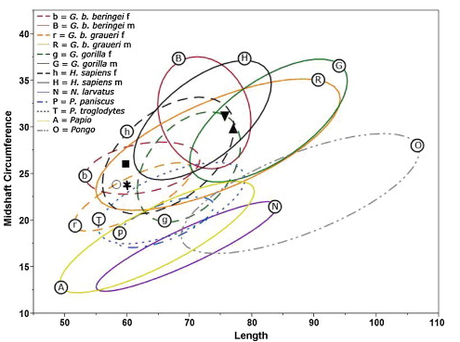Last week I wrote about the Institute for Creation Research’s (ICR) discussion of a recently discovered human foot bone. The bone resembled that of modern humans, despite being much older than us. Therefore we were all created 6,000 years ago fully formed. It’s the obvious inference. Anyhoo, Answers in Genesis (AiG) also wrote about the same story, making essentially the same argument. But don’t worry, I won’t be repeating myself today. No, this week we’re discussing an additional argument both the ICR and AiG made in their articles.
Well, I say both made it. The ICR argued this point and AiG simply quoted them in their piece. So without further ado here is AiG quoting ICR:
Institute for Creation Research writer Brian Thomas recently pointed out that back in 2011 another group found a human foot bone dated more than 3.0 million years old. Not surprisingly, since the “oldest” hominins in the evolutionary story are significantly “younger” than this, the foot bone was assigned to Lucy, an extinct ape, and used to provide her with an arched foot.
So this handbone isn’t the only human bone found older than it should be! Double proof we were created 6,000 years ago. Now, an old “human” footbone with arches…readers with a good memory might be finding this story a little familiar. And you’d be right, AiG and ICR are referring to AL 333-160, an Ethiopian toe bone that I’ve talked about before. For a quick recap, the human foot has a bunch of arches in it that help distribute our weight whilst walking and put a slight spring in our step, making the whole process more efficient. These arches are only present in humans, but AL 333-160 suggests that they may have developed 3 million years ago in Lucy’s species, Australopithecus afarensis.
Yet those of you with a good memory will recall that the presence of arches in this bone was later falsified. Although it is similar to humans, it also overlaps with gorillas. So unless you want to go around claiming gorillas have human feet this footbone can’t be said to be fully human. Except that’s what the creationists keep saying. So apparently gorillas have human feet now!

A chart depicting the range of variation in ape metatarsals. The star represents AL 333-160
So I guess I am repeating myself after all. But I think it’s interesting to return to this process because it gives us a chance to see how creation scientists work. It’s been 3 years since ICR wrote their last piece on the footbone; and 3 months since AiG did. So did Brian Thomas check to see if any new research on the foot had been conducted in the intervening 3 years? Clearly not. Did AiG? Nope. When deciding to quote Brian, did they fact check his claims? Again, nope.
The worst part of it all is that there are only 7 articles on the bone. And the one that disputes the arches tells you it is doing so in the title. These people would have had to have read 7 headlines to realize something is up, delve a bit deeper and realize they were in error. Google scholar found me those headlines in just 0.02 seconds. It reminds me of the Richmond and Strait paper AiG keeps citing in support of their claim that Lucy walked on all fours, rather than upright like a human. Subsequent research has ripped this research into tiny tatters, yet they keep using it as evidence. Subsequent research has shown you can’t say AL 333-160 is fully human, yet they keep using it as evidence.
It would seem that once a claim supports the creationists their critical examination stops. Both AiG and ICR have made a career out of criticising news stories about evolution, but once they find a story that is on their side they don’t even do a google search to see if new research has been done on the subject in 3 years.

